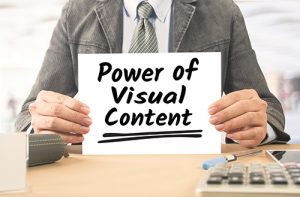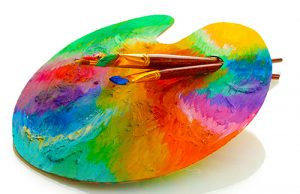Humans are storytellers. It’s in our DNA.
From the earliest sketches on cave walls to the ultra-lifelike 3D digital effects of today, we’ve been using visuals to tell our tales for eons. And we always will.
Art forms like writing, speaking, playing music, making videos, designing graphics, painting, drawing, and sculpting are all forms of storytelling. Over the decades, businesses have come to lean on visuals to tell their stories, too. This is evident in everything from logos and ads, to videos, websites, and social media – the latter of which relies heavily on visual content like photos, videos, Gifs, and even emojis.
Visual storytelling is a way to communicate in entertaining and interesting ways and, like any art, can connect with and incite an emotional response from the audience.
The Importance of Visuals
Like any form of art, visual elements can support – and even establish – a story that generates emotions. This is particularly important because people tend to remember what they feel.
 Visuals also exist independent of language, meaning they are something everyone can understand and relate to. When used in conjunction with the right words, they help deepen the meaning and establish a connection with the intended audience.
Visuals also exist independent of language, meaning they are something everyone can understand and relate to. When used in conjunction with the right words, they help deepen the meaning and establish a connection with the intended audience.
Developing a Strategy for Your Visual Story
Telling stories with good visuals is one of the most powerful content marketing strategies you can deploy. To do this successfully, it’s important to follow some guidelines.
First, set your goal(s). What is it you want to achieve with this piece? Who do you want to reach? What do you want them to feel or do? Is this going to be for brand awareness? Or to announce a new product or promotion? Once you have these details ironed out, you’ll be able to take actionable steps to bring your story to life.
Next, decide on the type of visual content you want, the platform it will live on, and who the viewing audience is. Often, the platform can help dictate the content itself. Your website, Facebook, Instagram, and Twitter are all great for most types of visual or written content, whereas YouTube is almost exclusively for video. Determining the platform first will go a long way in helping you decide what kind of visuals to use.
Tell Your Story – and Be Psychotic About It
No matter the brand or product you’re telling the story about, personalize it! After all, your audience is made of people, right? Do people things. Show people stuff. Use visual metaphors for words. Be authentic, and audiences will relate.
 Beyond authenticity, it’s a good idea to be a bit…psychotic. Color psychology has a bigger impact than you might realize, as different colors can spark different emotions.
Beyond authenticity, it’s a good idea to be a bit…psychotic. Color psychology has a bigger impact than you might realize, as different colors can spark different emotions.
Using colors and light in the right way is important because it will strengthen your story and convey a sense of realism. If you use them in the wrong way, it will misalign the message and change the intended impact. For example, you would probably not want to show a dark and scary image or video if you’re trying to tell a story about something happy and fun (Halloween notwithstanding of course.)
Leave Nothing Out
Stories have structure: a beginning, middle, and end. This applies to good visual marketing content too.
You’ll want to bring the viewer in with a good beginning, explain what the subject is and does in the middle, and finally give them – directly or indirectly – something to remember or act upon at the end. This could be a in the form of a strong call-to-action, a witty line of text, or another quality visual to round out the story.
Should the viewer take a follow-up action such as filling out a form, calling your business, or even searching for more information, you can rest assured you’ve told the story well.
Having a good plan in place is the key to visual storytelling. Once you have an idea of what the story is about and who it’s intended for, you’ll have a good approach to applying the art. And if you need help telling your story, just reach out to the storytellers.
